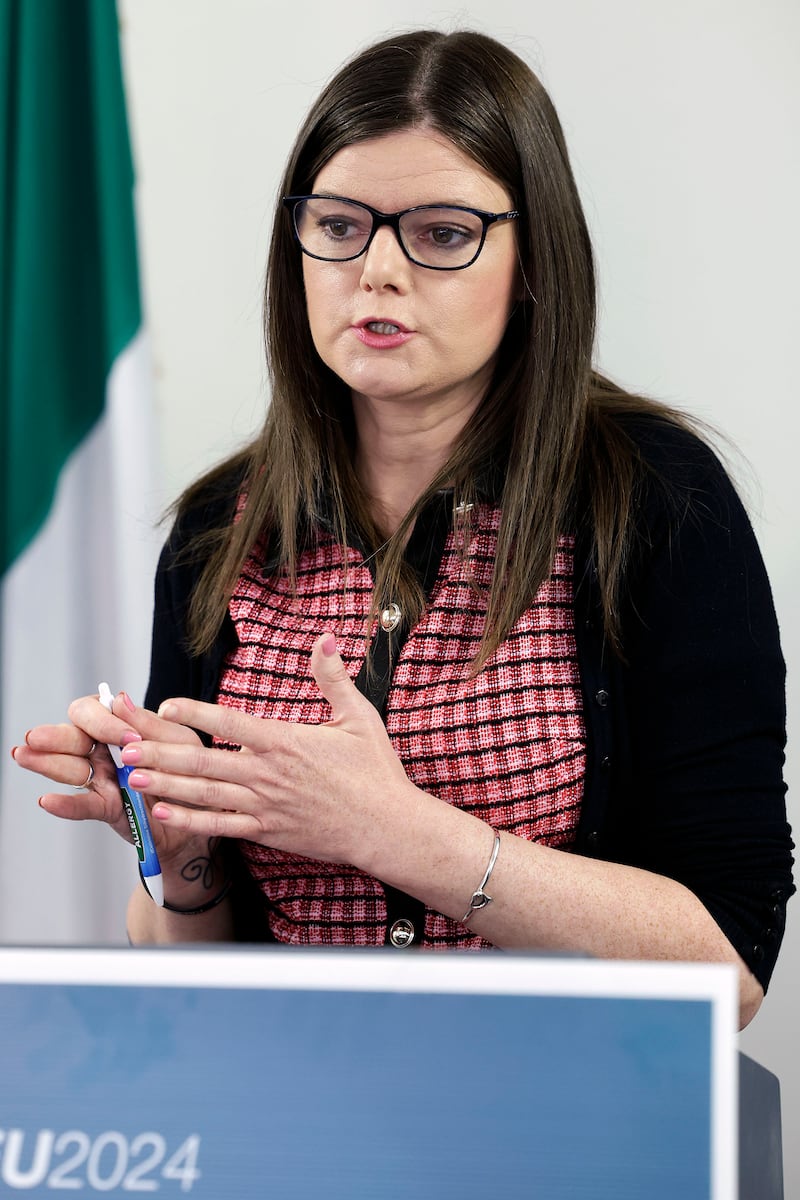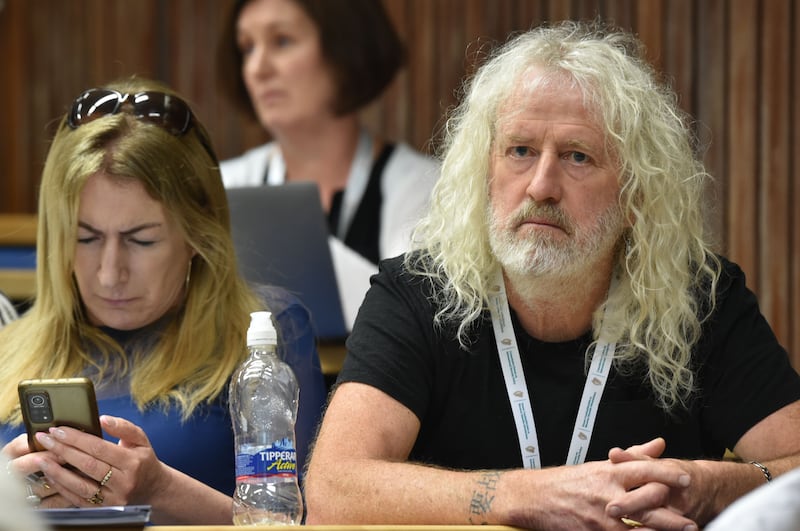For the first time in more than four years, Ireland is having an election, with almost 1,000 seats to be filled.
Since 2020 Irish politics has been roiled by unprecedented shocks: a pandemic, war in Europe, the cost-of-living crisis and a surge in immigration, alongside long standing voter frustrations with housing and other chronic issues.
Against this backdrop, those at the coalface say they are finding the electorate particularly inscrutable.
[ Follow the election results live Opens in new window ]
At a basic level, polls suggest a seat is on offer for each of the large parties in each of the three European constituencies. In local elections, the Civil War parties will be threatened by a surge in support for Independents and an anticipated recovery for Sinn Féin.
READ MORE
Beyond that, the only certainty is uncertainty. As one Coalition strategist confided: “Anything could happen. And I’d say anything will happen in the next couple of days.”
Fianna Fáil and Fine Gael
The Civil War parties are in Coalition, but tribalism runs deep, as does the advantage of holding the upper hand within that relationship.
Between them, they accounted for more than half the first preference vote in 2019. Irish Times polling for local elections in May suggested that had dropped to 41 per cent combined, trammelled by a rise in support for Sinn Féin (polling at 18 per cent) and Independents, currently on 23 per cent in local polling. On those numbers, they will both lose seats – something acknowledged internally, despite bullish public pronouncements. Fianna Fáil Ministers are privately of the view that 220-230 seats would be a good day, down from 279 in 2019.
Some Fine Gael strategists are adamant they can hold their number of seats level at 255 “or come damn close to it”, says one. If Sinn Féin underperform their midterm polling (as now seems inevitable), the title of the largest party in local government is a prize both will be vying for. Watch out for a tussle for supremacy in city councils in Galway and Cork, where Sinn Féin will put them under pressure, and in Fingal commuter battlegrounds such as Howth-Malahide, Rush, Lusk and Swords.
Both are likely to take seats in all three European constituencies. For Fianna Fáil, Billy Kelleher and Barry Andrews are front-runners in Ireland South and Dublin, while Barry Cowen would be unlucky not to take a seat in Midlands-North West, with Lisa Chambers still in touch.
Another seat is possible, with Cynthia Ní Mhurchú still in the running in South. Both Fine Gael and Fianna Fáil have written to members in parts of South urging them to vote for sweeper candidates Ní Mhurchú and John Mullins. But the final two seats in South will be a bear pit, with Michael McNamara, Mick Wallace, Grace O’Sullivan, Niamh Hourigan and even the far-right candidate Derek Blighe not out of touch. For Fine Gael, Maria Walsh is the lead candidate in Midlands-North West and should take a seat, as should Regina Doherty in Dublin, while there are hopes still for Nina Carberry.
Sinn Féin

Sinn Féin will have, in relative terms, a huge local seat gain. Expectations are for a doubling at least to 160 seats or more, but – relative to their polling until mid-2022 – this will feel like a let-down. Party figures say bellwethers in Mayo, Galway, Cork and Offaly – where representation is thin on the ground – will be early indicators, while in Dublin, one candidate says it will be clear early from boxes in Sinn Féin working-class heartlands what kind of day the party will have.
Rivals believe the party’s tickets are based on a much higher vote than is now expected. Some candidates privately admit to being “stretched”. Watch areas such as Palmerstown-Fonthill, where the party is running four candidates in five-seater Meath, where areas such as Kells and Trim have one sitting councillor between them and five candidates, as a litmus test of this strategy.
It will be interesting to see if Sinn Féin’s famed vote discipline in transferring between candidates holds up, with their base being picked off by Independents.
Lynn Boylan should take a seat in Dublin, but she will want to stay well clear of an almighty scrap for the fourth seat, which could make the race for third volatile. Labour’s Aodhán Ó Ríordáin, the Green Party’s Ciarán Cuffe and Independent Niall Boylan look set to do battle and left candidates People Before Profit’s Bríd Smith and Clare Daly of Independents 4 Change in touch still.
Sinn Féin’s Kathleen Funchion is well placed for a seat in Ireland South, and there’s likely to be a seat for the party in Midlands-North West, where it will hoover up votes along the Border, although campaigns by neither Michelle Gildernew nor Chris MacManus, both of Sinn Féin, seem too energetic, and Aontú leader Peadar Tóibín, a former Sinn Féin TD, will be seeking republican votes.

Election Daily: Who will top the poll and who will get sucked into 'the bear pit'?
The Green Party
Conventional wisdom would suggest a massacre for the junior Coalition partner. The Greens are certainly unlikely to add seats, but they are on 7 per cent in Dublin in our last national poll and 5 per cent in local election polling. A strong performance in the capital would be vital to staunch losses of the 49 seats won in 2019 with 5.6 per cent of the vote (45 remain with the party). The party’s leader, Eamon Ryan, has already begun setting goals such as winning a seat in Kerry or having a representative in every county which, if achieved, could cover some blushes. If they can avoid a collapse in the locals and hang on to Cuffe’s seat, it would be a good day. Green MEP Grace O’Sullivan has hung tough in South and can’t be ruled out, but it’s hard to see where the transfers will come from.
Independents

It could be a red letter day for Independents. In our last national poll in May, combined support was at 17 per cent, while our local poll suggested they would command 23 per cent of first preference votes in those elections. Some in the larger parties privately believe they could bag as many as 300 council seats. Europe could see a changing of the guard, with Independent 4 Change MEP Mick Wallace trailing in the polls and Clare Daly in a battle to save her seat. Conservative independents could benefit, with Michael McNamara in Ireland South and Niall Boylan in Dublin polling well. Boylan in particular is focusing minds among Government figures, with one campaign manager sketching a “nightmare” scenario where he mops up transfers from far-right candidates eliminated early to add to his first preferences. Although not an Independent, Peadar Tóibín could capitalise in Midlands-North West, as could former RTÉ broadcaster Ciarán Mullooly.
Migrant protest areas
Nationally, far right or migration critical candidates are on the ballot in many areas. Strategists from the main parties are sceptical of big gains, but there will be some – and migration politics has shifted other independents and larger party candidates to the right. With that in mind, watch closely places that have seen significant protests – among them, Ballymun Finglas and the north inner city in Dublin; in Louth, Drogheda Urban, where the D Hotel was converted to asylum accommodation; in the Wicklow local electoral area, home to Newtownmountkennedy, where some of the worst clashes have been; Mullingar, where Columb Barracks was blockaded; Fermoy, which has seen protests; and Mayo, with protests in Ballina. The county council passed a motion ceasing co-operation with asylum seeker accommodation services last year.
Smaller parties
An MEP seat for any of Labour, the Social Democrats or People Before Profit could be a pivotal point. Of those, Ó Ríordáin looks best placed in Dublin. His party privately believes they will do well to retain their current level of 51 local seats, with the party currently polling below its vote share in 2019. PBP similarly believes holding its 11 seats or a slight increase would be a good day, while figures in the Social Democrats believe anything below 30 seats – it currently has 19 – would be a disappointment; it is hoping for gains in the commuter belt, in urban centres, in rural counties and in west Cork, where leader Holly Cairns is based.
- Sign up for push alerts and have the best news, analysis and comment delivered directly to your phone
- Join The Irish Times on WhatsApp and stay up to date
- Listen to our Inside Politics podcast for the best political chat and analysis












